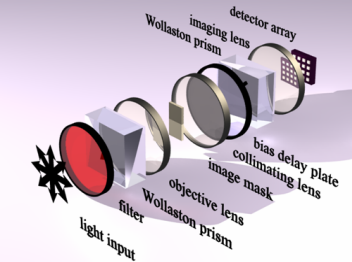Quadrature coherence imaging
|
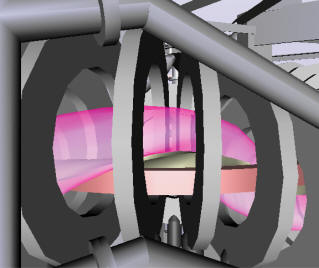 |
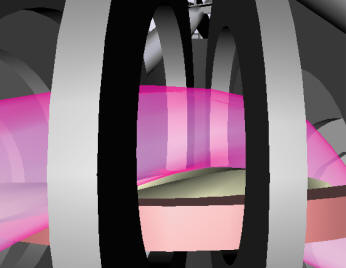 |
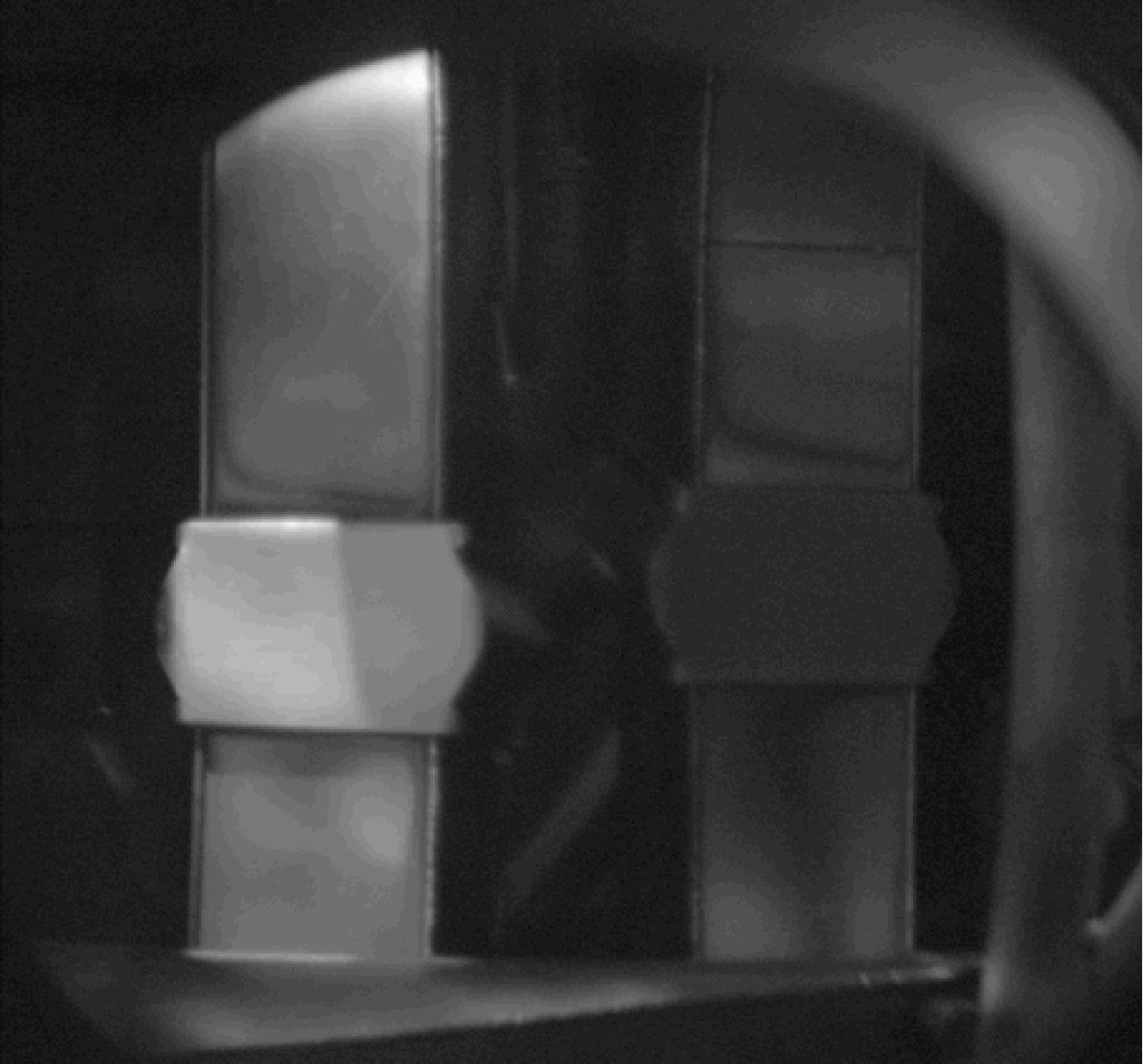 |
| Wide-angle view of plasma and coil set at the position of the camera viewing port. The plasma is shown in pink, the poloidal coil in copper color and the toroidal coils and supports in grey. |
Close-up of plasma region between toroidal field coils showing poloidal ring, helical conductor (wrapped onto the poloidal coil) and the plasma region |
Camera image looking through the tank viewport showing inside surfaces of adjacent toroidal field coils with anti-bulge clamps. The helical conductor is visible at the bottom of the image |
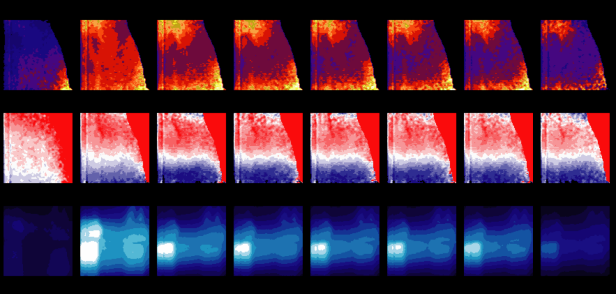 |
Top: A temporal sequence of temperature images (7ms exp) showing the evolution of a hollow ion temperature profile (blue ~ 5eV, yellow~30 eV) during rf heated, low-field discharges in argon. The field of view approximately matches the camera image above. Centre: the associated flow-field showing sheared rigid rotation about the approximately horizontal plasma axis (+/-2.5 km/s) Bottom: brightness images. Note the higher brightness regions correspond with reflections from the inside toroidal coil surfaces. The images are truncated in the upper right region due to non-ideal waveplate performance in this region. |

